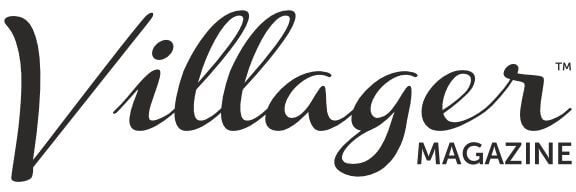Print Advertising – How To Make It Really Work
Marketers are spending more than ever on print advertising. With that in mind, I would like to offer observations about print advertising and share insights gathered from PRS Eye-Tracking studies. These studies document exactly how viewers read and consider print advertisements. I’ll also suggest several “Principles of Effective Print Advertising” resulting from experience studying how print advertisements are read and remembered.
The Nature (and Uniqueness) of Print Advertising
On the surface, print advertisements and television commercials face the same hurdles. In both cases, they must break through clutter and hold people’s attention while communicating memorably and persuasively.
However, there is a fundamental difference between television and print advertising:
- Television commercials have a pre-determined length of time and a beginning, middle and end.
- Print advertisements have a pre-determined space and the reader determines how long he or she chooses to view the ad.
In print, the reader is fully in control of how they consider the ad. In this sense, a print advertisement is more similar to a package trying to grab a shopper’s attention. In fact, the average viewing time ranges from 3-5 seconds.
How Print Ads Are Typically Read
With print advertising, the reader is in control of exactly how they read an advertisement. That includes which specific parts are actively considered and which are ignored. To understand this dynamic, we utilized PRS Eye-Tracking, which allowed us to track viewing patterns (starting point, ending point, etc.). It also allowed us to document what percentage of readers actively considered the headline, branding, primary visual, copy points, etc.
Here are three of the most important patterns that were revealed:
1. Ads are Scanned Rather Than Read
It should come as no surprise that even the most engaging print advertisements are not considered thoroughly by most readers. In fact, when ads are shown in magazine clutter, it was revealed that there is a “ceiling” of about 15 seconds of average viewing time.
As importantly, beyond a certain point (typically 4-5 sentences or bullet points) additional text is not likely to generate additional reading time. Instead, additional text mainly takes a reader’s attention away from other elements in the ad.
2. Readers Start with the Main Visual
Many print advertisements are designed on the assumption that readers will start at the top left and work their way downward in a traditional reading pattern. That assumption is a mistake. Readers nearly always start with the dominant visual element in the ad. In most cases, this element (usually an image) is positioned in the center of the page. From that starting point, traditional reading patterns often take over as readers drift or scan downward and rightward. As a result, messages positioned above or to the left of the main visual (including many headlines) are often missed.
While this viewing pattern should lead readers to the brand signature frequently seen in a bottom right corner, we also found that over 50% of readers “check out” before reaching this point. In fact, this is the primary reason for low brand recall.
3. Visuals Dominate Attention
Our study of ad viewing patterns reinforced that people prefer to take in information visually rather than verbally. In fact, readers spend at least half their viewing time on visual elements. Visuals are nearly twice as likely to be seen and actively considered as text. In addition, there is an inverse relationship between the length of text and the likelihood that it will be read. Without question, bullet points are more effective than paragraphs.
Guidelines for Effective Print Advertising
Here are some suggestions to help ensure print advertising consistently conveys branding and delivers its key messages:
- Communicate on Two Levels – In our experience, the most effective print advertising works in the following two ways: At a glance, in which a 3-5 second scan conveys the branding and the main idea; On a deeper level, in which an additional 10 seconds of viewing conveys key points. Unfortunately, many print ads “bury” their key messages with too much text.
- Communicate Branding Through the Main Visual – Many print ads use bold visuals to break through clutter and gain initial attention. However, if the main visual does not include a direct reference to the product advertised, readers consistently recall the image but fail to remember the brand. Regardless of the image used, make sure it includes your logo or slogan. A more subtle alternative is to keep a very consistent look that immediately conveys branding without requiring a viewer to read.
- Create a Dominant Viewing Pattern – The best way to hold a reader’s attention is to create a clear path throughout the ad. This can be done through effective layout and/or use of visual devices such as hand pointing or an object flying. The single most important point to consider is the positioning of the main visual relative to the main messages of the ad. When the main visual borders the advertisement at the top or left side, it leads readers directly through the ad.
- Keep It Simple and Direct – In print advertising, readers must “get it” within 3-5 seconds. It pays to be clear, direct and literal. You simply can’t ask the reader to work too hard or invest much thought to “get it”.
- Don’t try to do too much – On a more general level, it is critical to focus on conveying a singular message and not try to do too much within a single ad. It’s far better to lead readers to a website or phone number than to risk cluttering the ad and getting nothing across. Less is nearly always more.
Balancing Art & Science
Of course, there is no “formula” for effective print advertising. More than anything, we consistently found that it is unique appearance and ad placement that generate attention and involvement. At the same time, it would be incorrect to ignore the basic realities of how print advertisements are read. We strongly recommend businesses use the guidelines above and find ways to successfully advertise in print.
By applying these fundamental principles to the design of print ads and “balancing art with science,” marketers will be rewarded. They will be able to communicate more quickly, clearly and persuasively to create better results with their print advertising.

